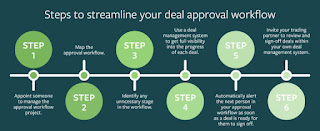Workflow Design Definition
Workflow design is the process of determining the most efficient way to complete tasks within a company. This process reduces waste, improves productivity, and allows for faster turnaround time.
A good workflow is essential for business success. It helps to standardize procedures and eliminate unnecessary steps that can be outsourced or eliminated altogether.
One such example is employee onboarding. An effective onboarding process consists of a series of sequential steps that guide a new hire through the first day on the job.
The process includes a number of important elements, including providing an onboarding checklist, assigning a mentor or coach, and creating a schedule for activities. It also ensures that each new hire has the resources and support needed to succeed.
This process can be completed efficiently with the help of a workflow management tool like Kissflow Workflow.
When designing a workflow, it is important to consider the inputs and outputs of each step. This will help to ensure that the correct data is used and the process is executed effectively.
For example, in an e-commerce order submission workflow, the consumer enters their payment information, the order is verified and then processed by the warehouse. The order is then delivered to the client.
While workflows are useful tools to ensure a smooth process, they can also lead to problems if they are not properly designed. In a health care setting, for example, poor workflows can interfere with patient safety.




Comments
Post a Comment